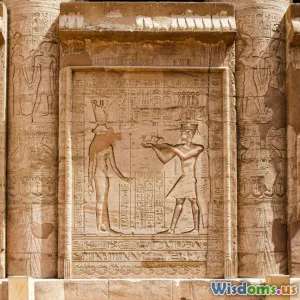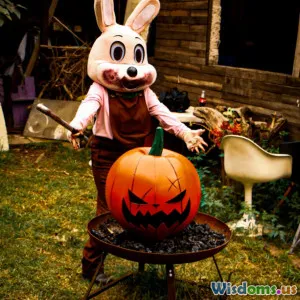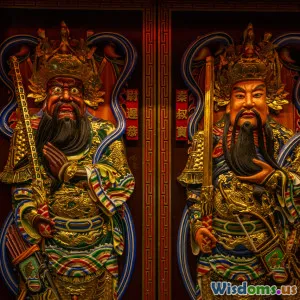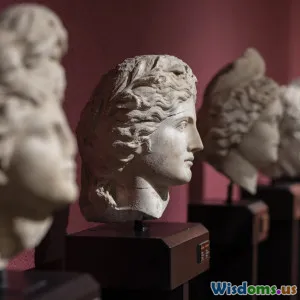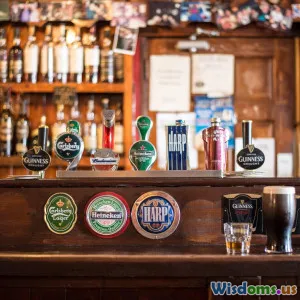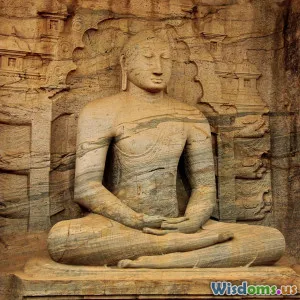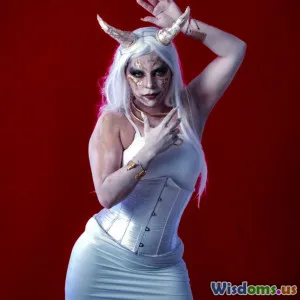
How To Write a Modern Fantasy Based on Norse Mythology
9 min read Discover how to craft a compelling modern fantasy inspired by the rich tapestry of Norse mythology. (0 Reviews)
How To Write a Modern Fantasy Based on Norse Mythology
Norse mythology brims with legendary tales of gods, heroes, and cosmic battles—an inexhaustible wellspring for fantasy writers seeking inspiration steeped in ancient mystique. But adapting these timeless myths for modern fantasy demands more than mere retellings; it requires a fusion of old lore with fresh narrative creativity to captivate contemporary readers. If you dream of crafting a modern fantasy novel or series rooted in Norse myth, this guide will unlock essential insights and techniques to transform ancient gods and sagas into gripping modern tales.
Understanding the Foundation: Why Norse Mythology?
Norse mythology stems from pre-Christian Scandinavia and boasts vivid stories centered around the Æsir and Vanir gods, giants, dwarves, and humans, woven into concepts of fate, honor, and cosmic cycles. From Odin's all-seeing wisdom to Thor's formidable hammer and Loki's cunning trickery, these narratives present archetypes that resonate deeply with universal themes.
This mythology’s richness comes from sources like the Poetic Edda and the Prose Edda, compilations that scholars such as Snorri Sturluson preserved in the 13th century. The palpable tension in Ragnarök—the apocalyptic battle signaling the end and rebirth of worlds—offers compelling stakes you can adapt for dramatic tension in your stories.
Why adapt Norse myths for modern fantasy?
- Timeless Themes: Heroism, destiny, sacrifice, and the struggle between order and chaos endure in all cultures.
- Complex Characters: Gods and beings who are flawed, multifaceted, and dynamic.
- Expansive World: Multiple realms (Asgard, Midgard, Jotunheim, etc.) for immersive worldbuilding.
- Cultural Resurgence: Increased interest through media like Marvel’s Thor or the video game God of War enhances relevancy.
Step 1: Deep Research Is Your Compass
Before pen meets paper, immerse yourself in Norse mythology's authentic narratives. Read the original primary texts (Poetic and Prose Edda) alongside modern interpretations by scholars like Carolyne Larrington or Neil Gaiman's Norse Mythology, which offers accessible retellings.
Analyze:
- Power structures: How gods interact with mortals and otherworldly beings.
- Motifs: Symbolism such as Yggdrasil (the World Tree), runes, and fate's inevitability.
- Cultural nuances: Ideas about honor, hospitality, revenge, and fate.
Avoid superficial adaptations by appreciating cultural contexts, so your narrative respects source material even when you adapt or diverge.
Step 2: Blend Mythology With Modern Elements
The key to successful modern fantasy is balancing ancient mythos with contemporary storytelling methods and themes. This keeps the story approachable and impactful for modern readers.
Setting and Worldbuilding
Reimagine the Nine Worlds as parallel dimensions, hidden realms within urban landscapes, or intertwined realities exposed by advanced technology or magic. Examples include:
- Neil Gaiman’s American Gods, blending old gods with a modern U.S. backdrop.
- Magnus Chase series by Rick Riordan, which places Norse mythic elements in a contemporary setting.
Worldbuilding tips:
- Define how magic works alongside technology.
- Create grounded rules inspired by myth but flexible for new invention.
- Use mythological locations as symbolic backdrops or vibrant places.
Themes
Link ancient Norse themes like fate (Wyrd) or the inevitable destruction and rebirth of Ragnarök with relevant modern concerns. For instance:
- Identity and destiny in a fractured modern world.
- Environmental themes referencing Yggdrasil and the natural cycles.
- Power struggles reflecting political or social dynamics.
Step 3: Craft Unique Characters With Depth
Avoid one-dimensional gods who solely serve mythic roles. Modern fantasy demands nuanced characterization that evokes empathy and complexity.
Consider:
- Reinterpreting Loki not merely as a trickster villain but as an antihero grappling with loyalty and self-identity.
- Human characters influenced by divine bloodlines or cursed by distant gods.
- Introducing new characters inspired by Norse archetypes but original in backstory and motive.
"Characters drive emotional connection," says fantasy author and scholar Evangeline Walton. Infuse your characters with internal conflicts and growth arcs predictable of quality contemporary fantasy.
Step 4: Plot With Mythos In Mind—But Embrace Originality
Mythology can provide plot skeletons; your job is fleshing them out in original ways:
- Use narratives like the Quest for Mjölnir as a template for adventure.
- Explore a reinterpretation of Ragnarök’s apocalyptic myth framed as a modern crisis.
- Craft political intrigue among gods mirroring modern power plays.
Mix ideas and add twists rather than retelling stories verbatim. For example, The Gospel of Loki by Joanne M. Harris retells Loki’s tale from his unique perspective, revealing motivations and vulnerability.
Step 5: Weave Language and Symbolism
To evoke Norse myth’s mythic tone, employ symbols—runes, Yggdrasil, Valknut—and stylistic language with measured doses. Berserker fury, poetic kennings ("whale-road" for sea), and rhythmic prose enrich readers’ immersion.
However, avoid alienating readers with overly archaic language. Instead, strike a balance by using evocative, crisp writing flavored with mythic elements.
Real-World Insights and Examples
Popular media reflect this trend:
- Marvel’s Thor movies humanized Norse gods for a global audience, blending mythic past with superhero genre.
- Video games like Hellblade: Senua’s Sacrifice explore mental health through Norse-inspired narratives.
- Literature: Joanne Harris, Rick Riordan, and Neil Gaiman each reimagine myths distinctively.
Cultural Sensitivity: Norse myths belong to Scandinavian cultural heritage. Engaging with these stories respectfully by acknowledging origins and complexities fosters authenticity and ethical storytelling.
Conclusion: Your Mythic Journey Begins Here
Writing a modern fantasy based on Norse mythology invites you to stand on the shoulders of giants—ancient poets and storytellers—while wielding your creative vision. By respecting the original myths, examining their timeless themes, and infusing them with contemporary voices and settings, you can create stories that enchant and resonate.
Begin with thorough research. Build worlds that honor myth but are fresh and imaginative. Develop characters with rich inner lives, and structure plots that surprise yet feel destined. Marry evocative symbolism with accessible prose. In doing so, you will craft not just a fantasy novel but a compelling myth for the modern age.
The sagas of yesterday are the inspiration for the epics of tomorrow—your own saga awaits.
Further Reading & Resources
- The Poetic Edda, translated by Carolyne Larrington
- Norse Mythology by Neil Gaiman
- Magnus Chase and the Gods of Asgard by Rick Riordan
- The Gospel of Loki by Joanne M. Harris
- Academic papers at The Viking Society for Northern Research: https://www.vsnr.org.uk
Rate the Post
User Reviews
Popular Posts










